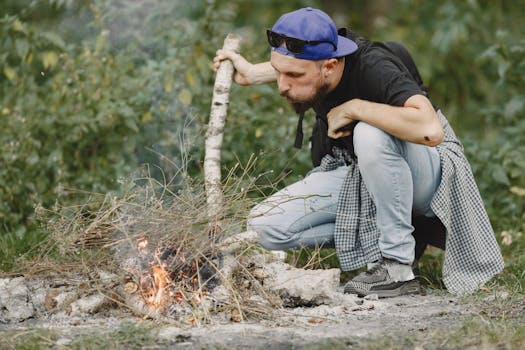Fire-lighting Techniques in Humid Conditions
Fire-lighting is an essential skill for survival, outdoor activities, and even recreational camping. However, achieving a successful fire in humid conditions can be particularly challenging due to the moisture in the air and the dampness of available materials. This article explores effective fire-lighting techniques tailored for humid environments, providing valuable insights for outdoor enthusiasts and survivalists alike.
Understanding Humidity and Its Impact on Fire-lighting
Humidity refers to the amount of water vapor present in the air. In humid conditions, the moisture content can significantly affect the ability to ignite and sustain a fire. Here are some key impacts of humidity on fire-lighting:
- Damp Materials: Wood, leaves, and other natural materials tend to absorb moisture, making them harder to ignite.
- Reduced Oxygen Availability: High humidity can lead to a denser air composition, which may affect combustion efficiency.
- Increased Difficulty in Ignition: Traditional fire-starting methods may fail due to the wet conditions, requiring alternative strategies.
Essential Fire-lighting Techniques for Humid Conditions
To successfully light a fire in humid conditions, one must adapt their techniques and materials. Here are some effective methods:
1. Selecting the Right Materials
Choosing the right materials is crucial when attempting to start a fire in humid conditions. Consider the following:
- Dry Kindling: Look for dry twigs, bark, or grass that may be sheltered from moisture, such as under trees or rocks.
- Fatwood: This resin-rich wood is highly flammable and can ignite even when damp.
- Commercial Fire Starters: Products like fire starter cubes or gel can provide a reliable ignition source.
2. Building a Fire Lay
The structure of your fire lay can significantly influence its success. In humid conditions, consider the following fire lay techniques:
- Pyramid Fire Lay: Stack kindling in a pyramid shape, allowing air to circulate and promote combustion.
- Log Cabin Fire Lay: Create a square structure with larger logs, leaving space for airflow and placing kindling in the center.
- Tepee Fire Lay: Arrange kindling in a tepee shape, which allows for good airflow and helps the fire catch quickly.
3. Utilizing Fire-starting Techniques
Different fire-starting techniques can be more effective in humid conditions. Here are some methods to consider:
- Friction-based Methods: Techniques like the bow drill or hand drill can be effective if you have dry materials for the spindle and hearth.
- Flint and Steel: This method can produce sparks that ignite dry tinder, even in damp conditions.
- Magnifying Glass: If the sun is shining, using a magnifying glass can focus sunlight to ignite tinder.
Case Studies and Real-world Examples
Understanding how others have successfully lit fires in humid conditions can provide valuable insights. For instance, during a survival training course in the Amazon rainforest, participants learned to use fatwood and palm fronds to create effective fire lays. The course emphasized the importance of finding dry materials and using a combination of fire-starting techniques to ensure success.
Another example comes from the Pacific Northwest, where campers often face high humidity levels. Many experienced campers recommend carrying a small supply of commercial fire starters and practicing their fire-lighting techniques in advance to prepare for challenging conditions.
Conclusion
Lighting a fire in humid conditions requires careful planning, the right materials, and effective techniques. By understanding the impact of humidity on fire-lighting and adapting your approach, you can increase your chances of success. Remember to select dry materials, build an effective fire lay, and utilize various fire-starting methods. With these strategies in mind, you can confidently tackle the challenges of fire-lighting in humid environments, ensuring warmth and safety during your outdoor adventures.
